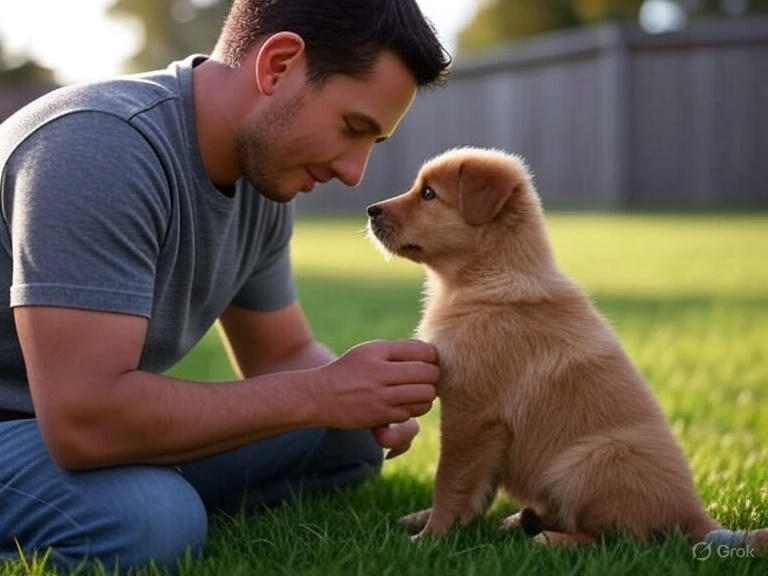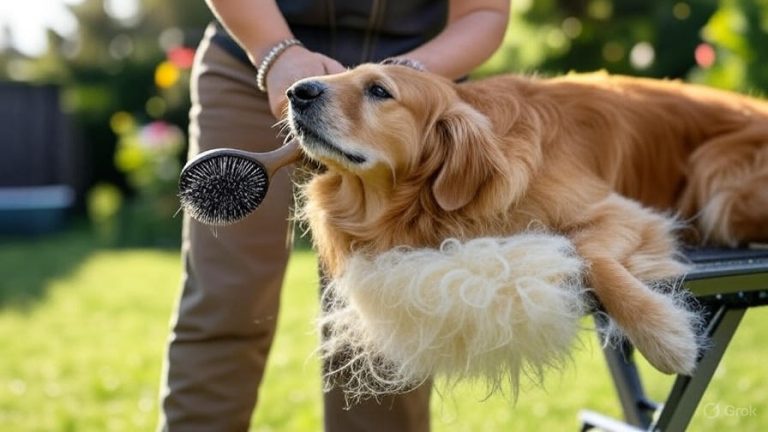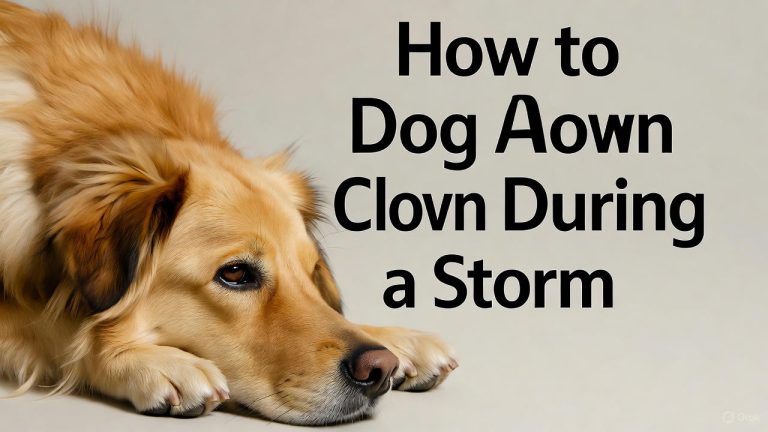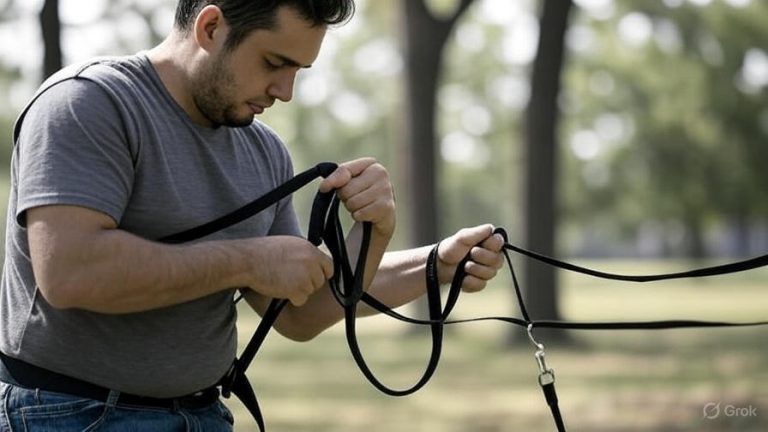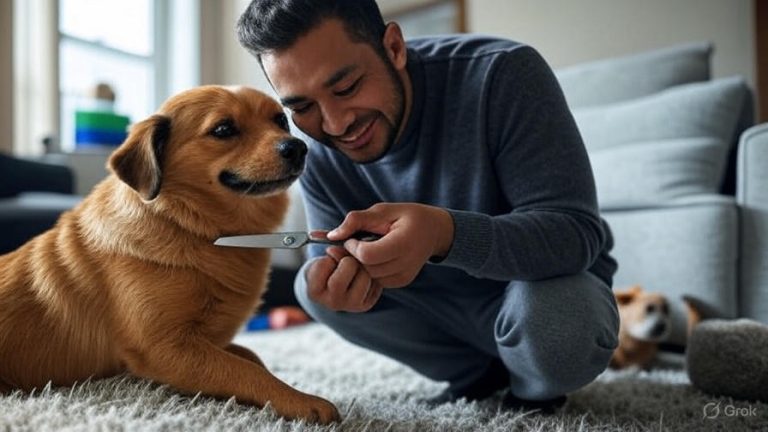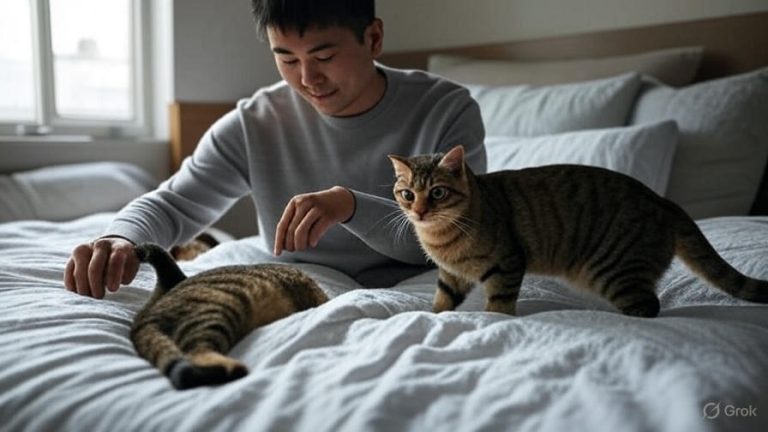How to Discipline Your Puppy?
Bringing a puppy into your home sparks joy, excitement, and a whirlwind of energy. Those tiny paws and curious eyes can melt your heart, but puppies also come with challenges. Chewed shoes, surprise puddles, and endless barking test your patience. Disciplining your puppy shapes them into a well-behaved dog, creating a harmonious bond. This guide dives into practical, humane, and effective ways to discipline your puppy while keeping their spirit intact. Let’s explore how to train your furry friend with love, consistency, and clear boundaries.
Why Puppy Discipline Matters
Puppies, like kids, thrive on structure. Without guidance, they develop bad habits that stick into adulthood. Proper discipline teaches them what’s acceptable, keeps them safe, and strengthens your relationship. A well-disciplined puppy grows into a dog that respects boundaries, listens to commands, and fits seamlessly into your life.
Discipline doesn’t mean punishment. Harsh methods scare puppies and erode trust. Instead, focus on positive reinforcement, redirection, and consistency. These approaches encourage good behavior while addressing unwanted actions. By setting clear expectations early, you pave the way for a happy, obedient companion.
Understand Your Puppy’s Behavior
Puppies explore the world with their mouths, noses, and boundless energy. Biting, chewing, and jumping stem from natural instincts, not defiance. Before disciplining, recognize why your puppy acts out. Are they teething? Bored? Seeking attention? Pinpointing the cause helps you address the root of the behavior.
For example, a puppy chewing furniture might need more chew toys or exercise. One that barks excessively could feel anxious or understimulated. Observe their patterns. Notice when and where misbehavior happens. This insight guides your training approach, making discipline more effective.
Set Clear Rules and Boundaries
Puppies need structure to feel secure. Establish house rules from day one. Decide where your puppy can go, what they can chew, and how they should behave. Consistency is key. If you allow your puppy on the couch one day but scold them the next, they’ll get confused.
Create a designated space for your puppy, like a crate or a cozy corner with their bed and toys. Use baby gates to limit access to off-limits areas. Clear boundaries prevent mischief and give your puppy a sense of routine. Share these rules with everyone in your household to ensure everyone enforces them uniformly.
Use Positive Reinforcement
Positive reinforcement rewards good behavior, encouraging your puppy to repeat it. Treats, praise, and playtime work wonders. When your puppy sits on command, give them a treat and a cheerful “Good job!” This makes them associate obedience with positive outcomes.
Timing matters. Reward your puppy immediately after they perform the desired action. If they sit but you give the treat a minute later, they might not connect the two. Keep training sessions short—five to ten minutes—to match their attention span. Over time, your puppy learns that good behavior equals rewards.
Redirect Unwanted Behavior
Puppies don’t know right from wrong until you teach them. Instead of scolding bad behavior, redirect it to something positive. For instance, if your puppy chews your slippers, swap them for a chew toy. Praise them when they chew the toy. This teaches them what’s okay to chew without fear or confusion.
Redirection works for jumping, too. If your puppy jumps on guests, ask them to sit instead. Reward the sit with attention or a treat. By replacing unwanted actions with acceptable ones, you guide your puppy toward better habits. Stay patient—puppies need repetition to learn.
Master the Art of Ignoring
Attention, even negative attention, reinforces behavior. If your puppy barks or whines for attention, don’t give in. Ignore them until they calm down. Once they’re quiet, reward them with praise or a treat. This teaches them that calm behavior gets your focus, while whining doesn’t.
Ignoring takes discipline on your part. A puppy’s sad eyes or persistent barks tug at your heartstrings. Stay firm. Turning away or leaving the room sends a clear message without yelling or scolding. Over time, your puppy learns that only calm, polite behavior earns your attention.
Use Time-Outs Effectively
Time-outs work when redirection or ignoring isn’t enough. If your puppy nips or gets too rowdy, place them in a quiet, safe space like their crate or a gated area for a brief period—about one to two minutes. This isn’t punishment; it’s a chance to calm down.
Keep time-outs short and neutral. Don’t make a fuss or act angry. Simply say a calm “time-out” and guide them to the space. After the time-out, redirect them to a positive activity, like playing with a toy. This approach helps your puppy learn to self-regulate without feeling scared.
Crate Training for Discipline
Crate training offers a powerful tool for discipline. A crate becomes your puppy’s safe haven, a place to relax and feel secure. It also prevents destructive behavior when you can’t supervise. Introduce the crate gradually with treats and praise to make it a positive space.
Use the crate for short periods, like when you’re cooking or stepping out briefly. Avoid using it as punishment—your puppy should associate the crate with comfort, not fear. A well-crate-trained puppy learns to settle down and respect boundaries, making discipline easier.
Teach Basic Commands
Commands like “sit,” “stay,” and “leave it” form the foundation of discipline. These cues give you control in tricky situations. For example, “leave it” stops your puppy from grabbing something dangerous, while “stay” keeps them calm during distractions.
Start with one command at a time. Use treats to lure your puppy into the desired position, like holding a treat above their nose to encourage a sit. Say the command clearly, reward immediately, and practice daily. Keep sessions fun and upbeat to hold their interest. Mastering commands builds your puppy’s confidence and obedience.
Address Biting and Nipping
Puppies nip during play or teething, but this habit needs curbing. When your puppy bites, let out a high-pitched “ouch” to mimic a littermate’s yelp. Stop playing and turn away for a moment. This signals that biting ends fun. Offer a chew toy instead and praise them for using it.
If nipping persists, use a time-out. Consistency is crucial—every bite should have the same consequence. Avoid rough play that encourages biting, like wrestling with your hands. Instead, use toys for interactive play. With time, your puppy learns that gentle behavior keeps the fun going.
Tackle Potty Training with Patience
Potty accidents frustrate every pet parent, but patience is essential. Establish a routine with frequent potty breaks—every one to two hours for young puppies. Take them to the same spot outside and use a cue like “go potty.” Praise and reward them when they go.
If accidents happen, don’t scold unless you catch them in the act. A firm “no” followed by taking them outside works better than yelling. Clean accidents thoroughly to remove scents that attract repeat offenses. Consistent routines and positive reinforcement make potty training smoother.
Exercise and Mental Stimulation
A tired puppy is a well-behaved puppy. Lack of exercise or boredom often leads to mischief like chewing or digging. Provide daily physical activity—walks, fetch, or tug-of-war—to burn energy. Adjust the intensity to your puppy’s age and breed. A high-energy breed like a Border Collie needs more activity than a Bulldog.
Mental stimulation is just as important. Puzzle toys, training games, and scent activities keep your puppy’s mind engaged. Rotate toys to maintain novelty. A stimulated puppy is less likely to act out, making discipline easier. Aim for a balance of physical and mental activities daily.
Socialize Your Puppy Early
Socialization shapes your puppy’s behavior around people, animals, and new environments. Expose them to different sights, sounds, and experiences between 3 and 16 weeks of age. Arrange playdates with friendly dogs, visit pet-friendly stores, or introduce them to new surfaces like grass or tile.
Keep experiences positive. If your puppy seems scared, go slow and offer treats to build confidence. Proper socialization reduces fear-based behaviors like barking or aggression, making discipline more effective. A well-socialized puppy adapts better to various situations, reducing problem behaviors.
Avoid Common Discipline Mistakes
Discipline fails when you’re inconsistent or unclear. Avoid these pitfalls:
- Yelling or physical punishment: This scares your puppy and damages trust. Use calm, firm corrections instead.
- Inconsistent rules: If jumping is okay sometimes but not others, your puppy won’t understand. Stick to the same rules every time.
- Delayed consequences: Correct behavior immediately so your puppy connects the action to the outcome.
- Overwhelming sessions: Keep training short and fun to avoid frustrating your puppy.
By sidestepping these mistakes, you create a clear, supportive environment for learning.
Build a Strong Bond
Discipline strengthens your bond when done with love. Spend quality time with your puppy through play, cuddles, and training. A strong connection motivates them to please you. Show them you’re a trustworthy leader by being calm, consistent, and fair.
Listen to your puppy’s needs. If they’re acting out, they might need more exercise, attention, or a break. A happy puppy responds better to discipline, so prioritize their well-being. Your bond grows as you work together, turning challenges into opportunities for connection.
Handle Setbacks with Grace
Training a puppy isn’t linear. Expect setbacks—your puppy might forget commands or regress during growth spurts. Stay calm and revisit earlier steps. For example, if potty accidents return, increase potty breaks and reinforce the routine. Progress takes time, especially with young puppies.
Track your puppy’s progress to stay motivated. Celebrate small wins, like a day without accidents or a successful “stay.” Patience and persistence pay off. Every step forward brings you closer to a well-behaved dog.
Seek Professional Help if Needed
Some behaviors, like aggression or extreme anxiety, require expert guidance. If your puppy’s actions worry you or don’t improve with training, consult a certified dog trainer or behaviorist. Look for professionals who use positive reinforcement methods. They can assess your puppy’s needs and tailor a plan to address specific issues.
Group training classes also help. They provide socialization and teach commands in a controlled setting. Your puppy learns to focus around distractions, and you gain tips from experts. Don’t hesitate to seek help—it shows commitment to your puppy’s success.
Create a Long-Term Plan
Discipline isn’t a one-time fix; it’s a lifelong process. As your puppy grows, adjust your approach. Adolescent dogs (6-18 months) often test boundaries, so reinforce rules consistently. Continue training sessions to maintain skills and introduce new challenges, like advanced commands or tricks.
Stay proactive. Regular exercise, mental stimulation, and socialization keep bad habits at bay. Monitor your dog’s behavior for changes that might signal stress or health issues. A long-term plan ensures your puppy grows into a confident, well-mannered dog.
Conclusion
Disciplining your puppy blends patience, consistency, and love. By setting clear rules, using positive reinforcement, and addressing unwanted behaviors with redirection, you guide your puppy toward good habits. Exercise, socialization, and mental stimulation prevent mischief, while a strong bond fosters trust. Embrace setbacks as part of the journey and seek help when needed. With time, your efforts transform your playful pup into a loyal, well-behaved companion. Start today, stay consistent, and enjoy the rewarding journey of raising a happy dog.

